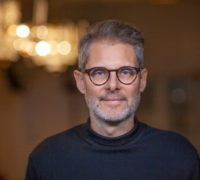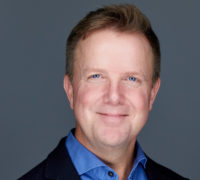
How to tame the bully on executive boards
From animal instincts to boardroom battles, the effects of bullying at the top of a company can damage profitability. Here’s how to make sure that doesn’t happen....

by Oscar Stege Unger, Lars Häggström Published 23 August 2023 in Human Resources • 7 min read
Recent business developments for the leaders of modern organizations have been both daunting and reassuring. On the one hand, the world is changing at unprecedented speed and every decision must be made in this complex, fast-moving environment. On the other hand, it has become evident that they already have within reach the knowledge and experience required to pick the right path through this confusion and volatility. It is all stored within the collective brains of their organizations.
Leaders know their people have the potential to solve many critical business challenges. After all, the human brain can hold more than 100 trillion pieces of data and calculates at a speed of 1 exaflop – 1 billion billion – per second. It is more powerful than any supercomputer yet designed. In practice, however, harnessing that power is difficult – people communicate slowly with one another; they are located in different places; they may not even speak the same language.
The good news is that technology now provides a solution. Electronic communications allows leaders to connect with every individual in their organization, one-on-one, all together, or in any other combination. And artificial intelligence (AI) offers a means by which to analyze the outputs from those interactions – to parse the vast knowledge locked within the workforce in order to chart the best way forward. Call it “collective discovery”.
When Rickard Gustafson joined the Swedish industrial manufacturing company SKF as CEO and President in 2021, one of his first acts was to email all 44,000 staff across almost 70 countries. In an ideal world, he told them, he would sit down with each and every one of them to hear their views on how SKF might become a better business – and how their workplace might be improved. Given the practical impossibility of doing that, Gustafson explained, he was instead launching the “Together” initiative.
Working with Canucci, SKF put Together into practice. It built a new internet platform and Gustafson told staff that he wanted their views on how to transform the business for the future. He pledged to listen and act on those views. Each member of the workforce was invited to fill out a short questionnaire – anonymously, in any language, and on the device of their choice – so that they could give their perspective, with candor, on how SKF needed to change under its new leadership.

SKF promoted Together with enthusiasm. Country leaders and factory foremen encouraged their colleagues and teams to take part. The company put up posters in its factories with QR codes that gave staff an instant shortcut to the Together platform. Gustafson promised he would communicate the views that he received to the whole business.
The response was phenomenal. More than 12,000 SKF staff took part – their answers ran to 1.3 million words and came in 12 languages. Each worker spent an average of 16 minutes giving their views. Together really had managed to capture the collective wisdom of the organization.
Canucci’s AI models then went to work on this data, scanning every completed questionnaire in order to find patterns and connections – to identify the signal within the noise. That work not only brought to light crucial insights into around a dozen areas that proved key to the company’s future, but also analyzed how these insights revealed connected thinking among the respondents. Staff with views about the pace of digitalization, for example, also frequently had strong opinions about how to get closer to SKF’s customers. Similarly, those remarking on leadership practices at the company often had insightful ideas about its culture.
The impact of the Together initiative has been considerable. This exercise in collective discovery has given SKF’s leadership a clearer vision of the future of the organization. And, in setting out a new strategic direction for the business, Gustafson feels empowered by the knowledge that he is acting on the views of the whole organization, rather than just those of a clutch of C-suite colleagues or management consultants.
Unsurprisingly, when SKF announced a reorganization of the business, there was little internal resistance to Gustafson’s plans. Many staff recognized that the changes reflected the contributions and suggestions they had made during the Together initiative. They were active participants in the business’s transformation and, therefore, felt part of the decision and ready to offer their support.
The Together experience is just one example of how Canucci is working with leaders to help them access the insight locked within their organizations. The AI tools at use here, while sophisticated, are a means to an end, rather than the end itself. Natural language processing (NLP) allows leaders to have completely different types of dialog with their people, even at the largest organizations. It’s a huge advance on traditional employee surveys, giving staff the opportunity to speak openly and in their own voices, rather than through the confines of multiple choice or scaled responses; plus the dialog can be repeated quickly and often.
Those conversations may not be individually revelatory, but that isn’t the point. Rather, this dialog offers the opportunity to build a far more informed view of what the organization’s priorities should now be – and then to mobilize the whole workforce to drive those imperatives.

Indeed, analysis of the data often reveals why securing this wider view is so vital. It is possible, for example, to segment analysis by country, by business function, or even by seniority. At one organization, Canucci identified an almost complete disconnect between management and the broader workforce; the two groups had utterly different ideas about what their organization needed to do to succeed.
Highlighting such contradictions can help organizations to move forward more constructively. The data is helpful in framing the challenge, but also in working out how to resolve it. In another Canucci engagement, employees focused on a cultural shift, discussing the mindset required to succeed in an industry set to change dramatically. They also identified the technologies and competencies that the organization was currently lacking but would need in this new world.
This kind of insight is often instrumental in the decisions leaders make about future strategy. It provides the foundation for deciding on the approach and execution necessary to take the opportunities offered and whether the organization is currently set up to deliver those.
Indeed, many leaders recognize that harnessing their workforce’s expertise and experience may be only the beginning of the transformation process. The natural instinct of leadership teams is often to move quickly; they want to be decisive. But the action they take may be more impactful if it reflects a deeper understanding of what is at stake.
In other words, collective discovery is not, in itself, a blueprint for change. After all, if AI could deliver an action plan for guaranteed invincibility, organizations would not need leadership. Rather, the goal is to give leaders the insight and intelligence they require to begin moving ahead and making decisions with confidence.
As they do so, the benefit they can derive from an engaged, invested workforce cannot be overstated. This is not simply because staff want to feel heard, important though that is; it is also because initiatives such as Together enable workforces to let the wider organization know what matters to them.
When the time to change came, SKF very deliberately asked two questions: What did people think was necessary for the company to thrive in future? And what needed to change in their own workplace? The initiative recognized that staff would have the answers to many key business questions; but it also wanted to know what made its people tick. If it could tap into that, it would be able to act to ensure engagement and retention. After all, collective wisdom, like any other kind, only grows with experience.

Founder and CEO of Canucci
Oscar Stege Unger is the Founder and CEO of Canucci, an AI-driven company founded in 2020 with the goal of combining peer experience, technical expertise, and data insights to support organizations and leaders with their transformative work. He is a Senior Advisor to the Wallenberg Foundations AB where he advises them within strategy, communication, and the network for the Wallenberg Foundations and the Wallenberg Family.

Senior Adviser, IMD Business School
Lars Häggström is Senior Adviser at IMD and a former CHRO at Stora Enso, Nordea and Gambro.

9 November 2023 • by Lars Häggström in Human Resources
From animal instincts to boardroom battles, the effects of bullying at the top of a company can damage profitability. Here’s how to make sure that doesn’t happen....

27 October 2023 • by Ginka Toegel in Human Resources
It’s time to debunk outdated myths around women lacking confidence and not asking for pay rises and focus on the real problem: societal misperceptions. ...

19 October 2023 in Human Resources
This three-pronged approach, inspired by some of India’s most successful female entrepreneurs, can help compensate for government failure on a global level when it comes to mental health....

9 October 2023 • by Natalia Olynec, Lars Häggström in Human Resources
With a growing number of employees holding their organizations to account over sustainability commitments, the onus is on HR departments to explain a firm’s purpose and impact if they are to attract...
Explore first person business intelligence from top minds curated for a global executive audience